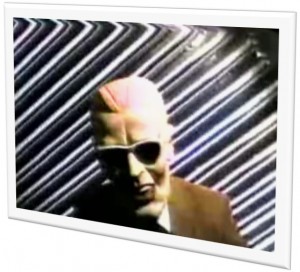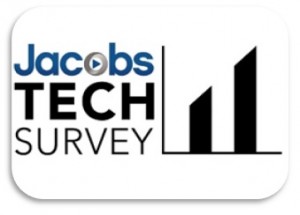It’s pretty amazing watching the results of Techsurvey11 rolling in. Like the returns on election night, you can literally track the results as they come in and start the obligatory comparisons to the results from previous years.
We’re not quite done yet, but with more than 36,000 in-tab interviews collected, you have a pretty good idea about what the data is saying. In fact, while some metrics will continue to show a gradual increase in the march on digital, 0ther data points suggest that movement is occurring at electric speeds, forcing us to take notice and rethink the givens.
 Whether you’re fortunate to watch the data in real-time or not, it should be obvious to everyone to radio that we now live in a very different media world than the one most of us entered when we got that first job in radio. We didn’t think it at the time, but our radio lives were a lot simpler then, as the competition was clearly defined and very much confined to the other stations in town.
Whether you’re fortunate to watch the data in real-time or not, it should be obvious to everyone to radio that we now live in a very different media world than the one most of us entered when we got that first job in radio. We didn’t think it at the time, but our radio lives were a lot simpler then, as the competition was clearly defined and very much confined to the other stations in town.
There may have been great radio stations around the country, but none was a threat to what you were doing locally. After all, no one in your market could possibly hear them.
And while we all had a friend or two who were plugged into the music scene, outside of MTV, the only place you could truly discover a new band or hear that new album from your favorite group was on the radio.
At best, a band had a fan club, but nothing as sophisticated as today’s websites and email clubs that keep the loyalists constantly updated.
And only the most avid fans subscribed to magazines like Rolling Stone to help fill in the blanks and tell the stories of bands you were hearing on the radio. Or they listened to shows like Rockline to hear the bands in their own voices because they rarely, if ever, appeared in mainstream media outside the radio.
But those days are over, and today, even the most casual music consumers have resources galore, like Shazam to identify those songs playing in coffee shops, or pure-play platforms like Spotify, Pandora, and Slacker that serve up music in a variety of clever ways that requires very little effort on the consumer’s part.
 So amidst all these changes, why are most radio stations still operating like they’re living in that familiar, comfortable RvR cocoon – that is, Radio vs. Radio, where the frame of reference is the other Country, AC, or Rock station in town? Why do salespeople compete for “radio dollars” and judge themselves against Miller-Kaplan reports instead of fighting for share of total ad dollars?” And why is research almost always confined to our music, our personalities, and our image profile that is defined in comparison to other stations in the metro area?
So amidst all these changes, why are most radio stations still operating like they’re living in that familiar, comfortable RvR cocoon – that is, Radio vs. Radio, where the frame of reference is the other Country, AC, or Rock station in town? Why do salespeople compete for “radio dollars” and judge themselves against Miller-Kaplan reports instead of fighting for share of total ad dollars?” And why is research almost always confined to our music, our personalities, and our image profile that is defined in comparison to other stations in the metro area?
There’s a bigger picture, and you read about it every day in studies like our Techsurveys or the Infinite Dial, as well as research from myriad sources around the world.
The fact is, it’s really an RvE world in which we live, compete, and will ultimately have to survive. Yes, that’s Radio vs. Everything, because the real truth is that with each passing month, the “radio receivers” in people’s lives become more technically adept at seamlessly delivering everything.
Whether it’s coming out of laptops, mobile phones and tablets, or new cars on the road, broadcast radio no longer benefits from a competitive environment built on scarcity. Today, stations have to duke it out in a world of media abundance. And while we can appreciate the happy reality that audio is indeed experiencing a renaissance as more people enjoy listening to music and talk in multiple formats as well as the growth of podcasting, we have to accept the reality that there’s never been more pressure on broadcast radio programmers. That is, how to provide for their brands what we all learned in Marketing 101 as the USP – our unique selling proposition that positively sets AM/FM stations apart from everyone else.
It’s just that when “everyone else” was limited to a three or four radio stations playing a similar music genre to ours, it was easier to wrap your competitive head around that challenge. Today, “everyone else” has expanded exponentially – pure-plays, satellite radio, personal music collections, apps, podcasts, and of course, the myriad of video that comes rushing into our devices like digital fire hydrants.
We need to step back, see the new media environment for what it is (and what it will be), and redefine our terms and our scorecards. This doesn’t mean treating your local ratings and sales goals as less relevant. But it does mean widening your lens to account for this RvE reality. It doesn’t mean that you should stop testing your music, but it does mean that you need to devote research resources to the broader media landscape. It means competing more broadly from a programming, marketing, and content creation standpoint. And it means expanding sales efforts into digital arenas that the RAB continues to remind us every quarter hold more promise and potential.
 For us at Jacobs Media, it’s going to require a different way of analyzing and presenting the data for Techsurvey11. I’m looking at the Worldwide Radio Summit in L.A. in April as that point in time where the onus is on us to deliver data in more meaningful ways that can help our stakeholders navigate these changing waters and compete more effectively in an RvE world.
For us at Jacobs Media, it’s going to require a different way of analyzing and presenting the data for Techsurvey11. I’m looking at the Worldwide Radio Summit in L.A. in April as that point in time where the onus is on us to deliver data in more meaningful ways that can help our stakeholders navigate these changing waters and compete more effectively in an RvE world.
For those of you working inside AM/FM radio stations and broadcasting companies, it may mean rethinking what it is that makes your brand unique using the backdrop of today’s multi-media offerings. It may mean creating an MMUSP – or your Multi-Media Unique Selling Proposition.
What is it about your brand, your personalities, your music, and your local essence that will compel today’s consumers to choose you on the rapidly changing devices of their choice? What jobs are people hiring your station to do, and are you delivering on that promise?
Tomorrow, we’ll get into specifics.
Techsurvey11 will be presented at the Worldwide Radio Summit in Los Angeles on March 22-23. Information here.
- What To Do If Your Radio Station Goes Through A Midlife Crisis - April 25, 2025
- A 2020 Lesson?It Could All Be Gone In A Flash - April 24, 2025
- How AI Can Give Radio Personalities More…PERSONALITY - April 23, 2025




Leave a Reply